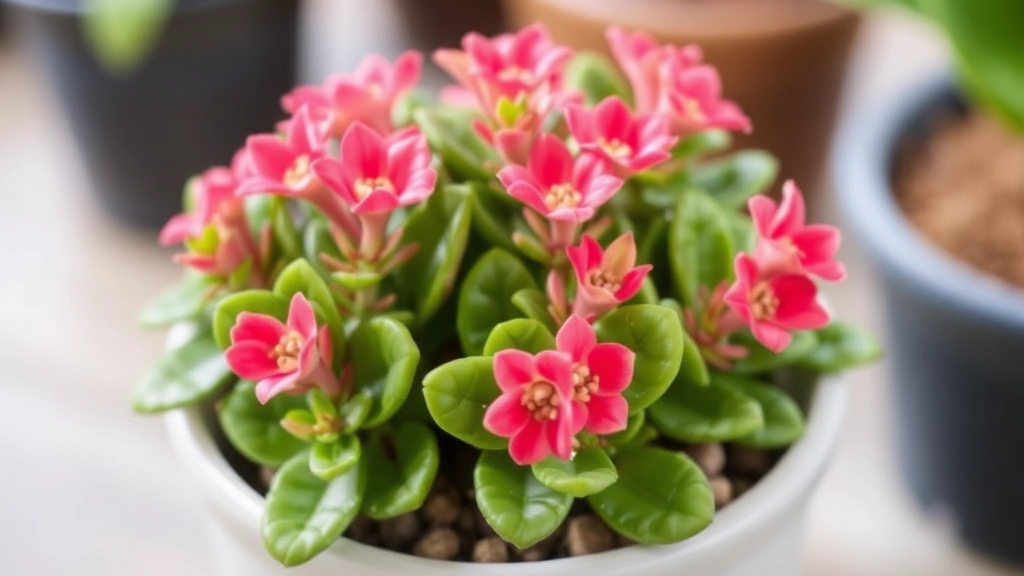Kalanchoe Maternity Plant Care
If you’re looking to master Kalanchoe Maternity Plant care, you’ve come to the right place. Known as the “Mother of Thousands,” this unique succulent requires specific attention to thrive. From optimal light conditions to the perfect soil mix, I’ll guide you through every step to ensure your plant flourishes. Let’s dive into the essentials of caring for your Kalanchoe daigremontiana.
Light Conditions
Your Maternity Plant loves bright, indirect sunlight. Too much direct sun can scorch its leaves, while too little light will stunt its growth. Finding that sweet spot is key.
Soil
A well-draining mix is crucial to prevent root rot. A blend of cactus soil and perlite works wonders. Stay tuned as we explore watering techniques, temperature preferences, and more to keep your Mother of Thousands thriving.
Best Light Conditions for the Maternity Plant
When it comes to caring for your Kalanchoe Daigremontiana, or the Maternity Plant, one of the most pressing concerns is understanding its light requirements.
Ideal Soil Mix for Kalanchoe Daigremontiana
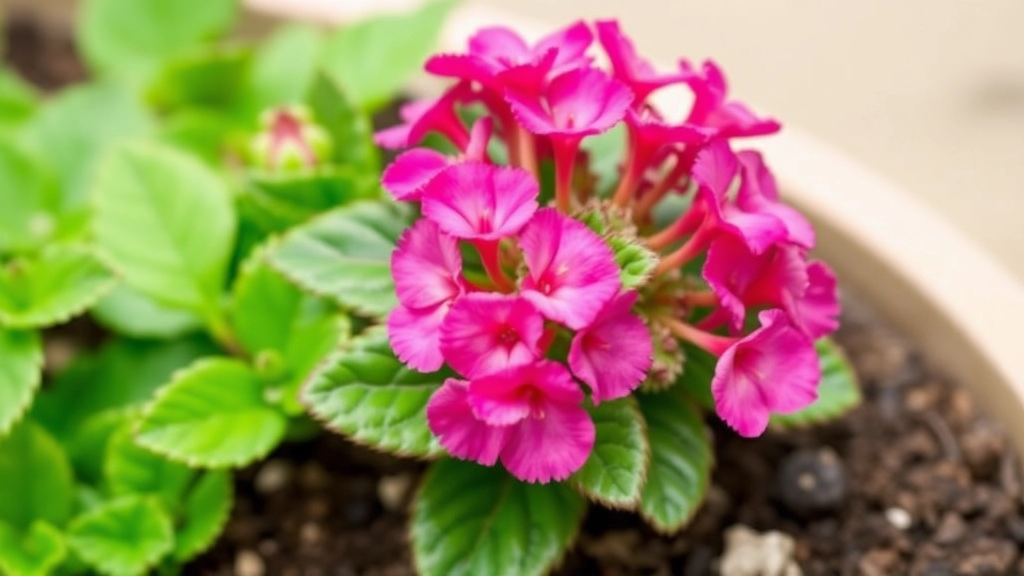
So, you’ve got your Mother of Thousands and you’re wondering what type of soil will keep it thriving?
Choosing the right soil mix is crucial for the health of Kalanchoe Daigremontiana.
Key Characteristics of Ideal Soil
- Well-Draining: This plant hates sitting in water. A mix that drains well is a must to prevent root rot.
- Aeration: You want a soil that allows air to circulate around the roots. This keeps them healthy and happy.
- Nutrient-Rich: While Kalanchoes aren’t heavy feeders, a little nutrition goes a long way.
Recommended Soil Mix
Here’s a simple recipe you can whip up:
- 60% Cactus Mix: This provides the right drainage and aeration.
- 30% Perlite: It helps with drainage and keeps the soil light.
- 10% Organic Matter: This could be compost or well-rotted leaf mould for a nutrient boost.
Store-Bought Options
If DIY isn’t your style, don’t worry! You can find pre-made cactus or succulent soil mixes at garden centres. Just ensure they’re designed for good drainage.
Why It Matters
Using the right soil mix not only promotes healthy growth but also helps prevent common issues like overwatering and root rot.
Proper Watering Techniques for Mother of Thousands
When caring for your Mother of Thousands, one of the most common concerns is watering. Overwatering can lead to root rot, while underwatering can cause the plant to wilt. Striking the right balance is crucial for this succulent.
Temperature and Humidity Preferences

When caring for your Kalanchoe Daigremontiana, understanding its temperature and humidity needs is essential for thriving growth.
What Temperature Does Your Maternity Plant Prefer?
- Ideal Range: Kalanchoe Daigremontiana flourishes in temperatures between 20°C and 25°C (68°F to 77°F).
- Nighttime Comfort: At night, it can tolerate slightly cooler conditions, ideally down to 15°C (59°F).
Humidity Levels to Consider
- Low Humidity: This plant is quite adaptable and prefers low humidity levels, typically around 30% to 50%.
- Avoid Excess Moisture: High humidity can lead to issues like root rot and fungal diseases.
Tips for Maintaining Optimal Conditions
- Indoor Placement: Keep your plant indoors during colder months to avoid drafts and frost.
- Outdoor Care: If growing outside, ensure it’s in a sheltered spot away from extreme weather conditions.
- Monitor Temperature: Use a thermometer to keep track of the environment, especially during seasonal changes.
V. Fertilization Guide: Feeding Your Maternity Plant
As we delve deeper into the care of your Kalanchoe Daigremontiana, understanding its fertilization needs is essential for promoting vibrant growth and health.
Why Fertilization Matters
Have you ever wondered why your Maternity Plant isn’t thriving as expected? The right nutrients can make all the difference.
When to Fertilize
- Growing Season: Fertilize during spring and summer when the plant is actively growing.
- Frequency: Every 4-6 weeks is ideal during this period.
Choosing the Right Fertilizer
Opt for a balanced, water-soluble fertilizer. Here’s what to look for:
- N-P-K Ratio: A ratio of 10-10-10 or similar works well.
- Organic Options: Consider organic fertilizers like fish emulsion or seaweed extract for a natural boost.
Application Tips
- Dilution: Always dilute the fertilizer to half the recommended strength to avoid burning the roots.
- Watering First: Water your plant before applying fertilizer to help it absorb nutrients better.
- Even Distribution: Apply evenly around the base of the plant, avoiding direct contact with the leaves.
Signs of Nutrient Deficiency
Keep an eye out for these signs:
- Yellowing Leaves: This may indicate a nitrogen deficiency.
- Stunted Growth: A lack of nutrients can hinder growth.
For a more comprehensive understanding of your plant’s needs, consider checking out our Complete Guide to Caring for Kalanchoe Mother of Millions Plant. Additionally, if you’re interested in propagation techniques, our Kalanchoe Stem Propagation Step-by-Step Guide offers valuable insights.
Managing Common Pests and Diseases
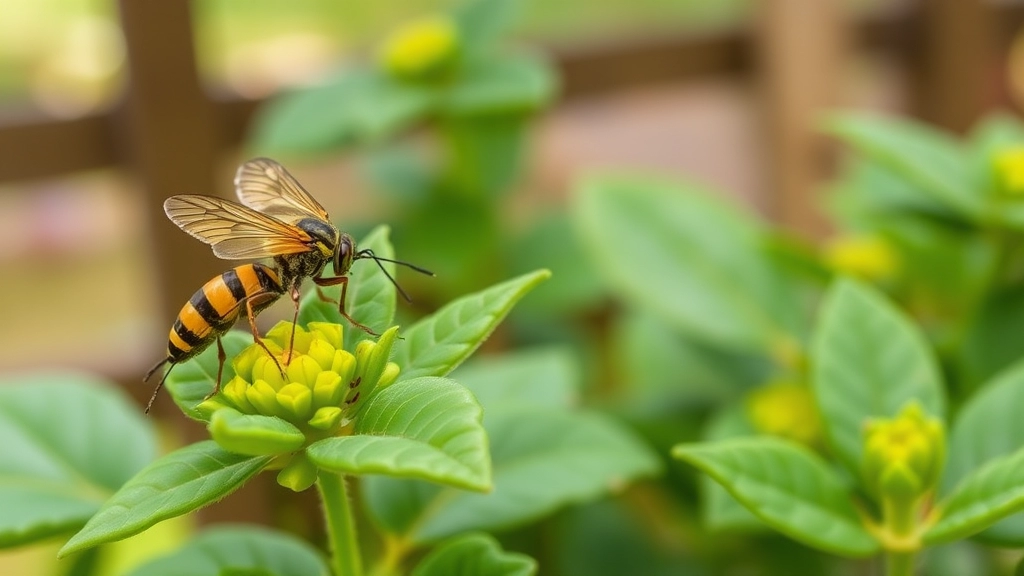
Are you noticing some strange spots on your Kalanchoe Daigremontiana?
Worry not; you’re not alone! Many plant parents face similar issues with pests and diseases.
Common Pests to Watch Out For:
- Aphids: Tiny green or black bugs that suck sap from your plant.
- Mealybugs: White, cottony pests often found in leaf axils.
- Spider Mites: Tiny red or yellow dots that create fine webbing.
- Scale Insects: Hard, shell-like pests that attach themselves to leaves.
Signs of Trouble:
- Yellowing leaves
- Stunted growth
- Sticky residue on leaves (from aphids)
- Webbing (from spider mites)
Quick Tips for Pest Control:
- Manual Removal: For small infestations, just wipe them off with a damp cloth.
- Insecticidal Soap: Spray your plant with this to knock out pests without harming it.
- Neem Oil: A natural remedy that works wonders against many pests.
- Regular Checks: Keep an eye on your plant to catch issues early.
Diseases to Be Aware Of:
- Root Rot: Caused by overwatering; look for mushy roots.
- Leaf Spot: Fungal infection that creates dark spots on leaves.
Preventive Measures:
- Good Drainage: Make sure your pot has holes for excess water.
- Proper Airflow: Space your plants so they can breathe.
- Avoid Overwatering: Stick to a watering schedule to keep your plant happy.
How to Prune and Shape Your Maternity Plant
Pruning is an essential part of maintaining the health and aesthetics of your Kalanchoe Daigremontiana, commonly known as the Maternity Plant. You might be wondering, “When is the right time to prune?” or “How do I shape it without harming the plant?”
Understanding the Importance of Pruning
Pruning not only keeps your Maternity Plant looking tidy, but it also promotes healthy growth and prevents overcrowding. Here are some key benefits:
- Encourages New Growth: Regular pruning stimulates the plant to produce new leaves and offsets.
- Prevents Disease: Removing dead or damaged leaves can help avoid pest infestations and diseases.
- Shapes the Plant: A well-pruned plant looks more appealing and can fit better in your space.
When to Prune
The best time to prune your Maternity Plant is during its active growing season, typically in spring or early summer. This allows the plant to recover quickly and thrive.
How to Prune
- Gather Your Tools: Use clean, sharp scissors or pruning shears.
- Identify Problem Areas: Look for:
- Dead or yellowing leaves
- Overgrown stems
- Excess offsets
- Make Clean Cuts:
- Trim leaves close to the base.
- Cut stems at a 45-degree angle to promote healing.
- Remove Offsets: Gently pull away any plantlets that have formed around the base.
Shaping Your Plant
- Consider the Desired Shape: If you prefer a bushier look, prune less aggressively. For a taller, more upright plant, trim the lower leaves.
- Maintain Balance: Ensure that you’re not removing too much from one side, which can lead to an uneven appearance.
Aftercare
Following pruning, ensure your Maternity Plant receives adequate light and water to encourage recovery. For more detailed care tips, you might find our expert tips on Kalanchoe succulent care helpful. Additionally, if you’re dealing with specific issues such as black spots on Kalanchoe leaves, we’ve got you covered.
Repotting Tips for Healthy Growth
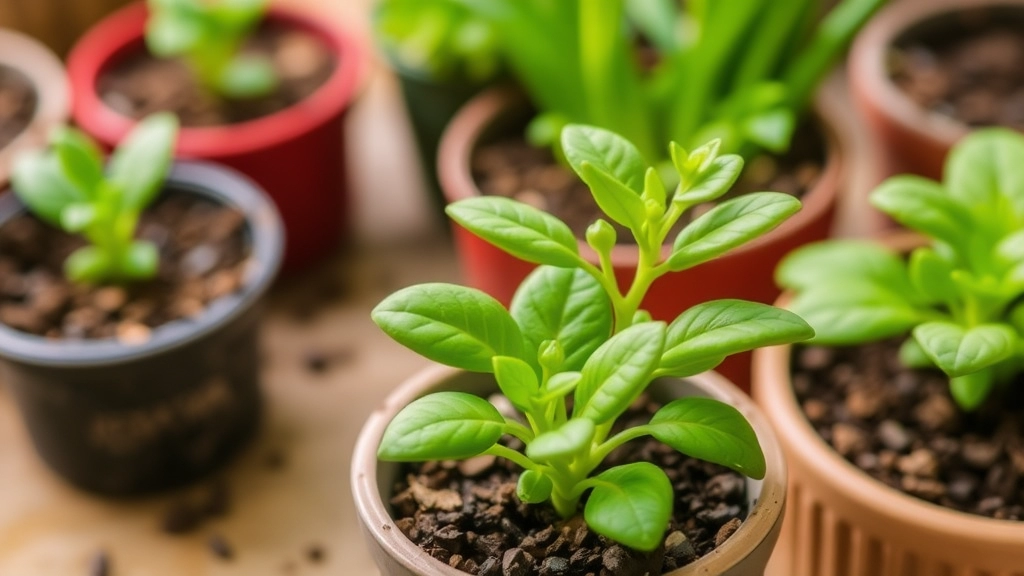
Are you noticing your Mother of Thousands looking a bit cramped? Repotting is key to keeping your Kalanchoe Daigremontiana thriving.
When to Repot
- Timing: Spring is the perfect time to repot. Your plant is waking up and ready to grow.
- Signs: Look for roots poking out of the drainage holes or if the plant seems top-heavy.
Choosing the Right Pot
- Size Matters: Go for a pot that’s just one size up. Too big, and the plant might struggle.
- Drainage: Ensure it has good drainage holes. Kalanchoe hates sitting in water!
Soil Selection
- Soil Mix: A well-draining cactus mix works wonders. You can even add perlite for extra aeration.
- Nutrients: Fresh soil gives your plant the nutrients it needs to bounce back.
The Repotting Process
- Prepare Your Tools: Get your new pot, fresh soil, and some gloves if you prefer.
- Remove the Plant: Gently take your plant out of its old pot. Don’t rush; you don’t want to damage the roots.
- Loosen the Roots: If they’re tightly bound, gently tease them apart. This encourages new growth.
- Add Soil: Place a layer of fresh soil in the new pot, position your plant, and fill in around it.
- Water: Give it a light watering to settle the soil, but don’t soak it.
Aftercare
- Location: Keep it in a spot with bright, indirect light for a few days to help it adjust.
- Watch for Stress: Monitor for wilting or yellowing leaves. This can happen after repotting, but it should bounce back.
Propagating from Plantlets: A Step-by-Step Guide
Many plant enthusiasts wonder how to propagate their Kalanchoe Daigremontiana, also known as the Mother of Thousands. This process is not only rewarding but also quite straightforward. Let’s dive into the steps to successfully propagate from plantlets.
Why Propagate from Plantlets?
The Kalanchoe Daigremontiana produces tiny plantlets along its leaf edges, making it exceptionally easy to propagate.
Seasonal Care: Indoor vs. Outdoor Growing
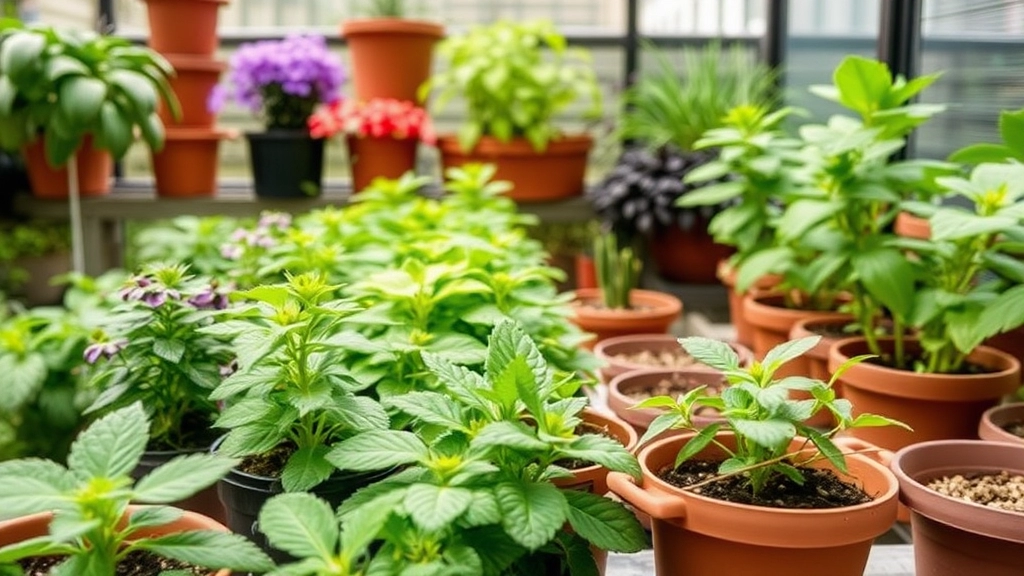
So, you’ve got your Kalanchoe Daigremontiana, also known as the Mother of Thousands, thriving. But what about the seasonal shifts?
Indoor Growing: Keeping It Cozy
When you’re growing your maternity plant indoors, you want to keep things stable. Here’s what to keep in mind:
- Light: In winter, natural light can dwindle. Consider moving your plant closer to a window or using a grow light.
- Temperature: Aim for a consistent temperature between 18-24°C. Avoid drafts or sudden temperature drops.
- Humidity: Indoor air can get dry, especially with heating. A little humidity can do wonders—try misting occasionally or placing a tray of water nearby.
Outdoor Growing: Embracing the Elements
If you’re lucky enough to have outdoor space, seasonal care shifts a bit. Here’s how to keep your Maternity Plant happy outside:
- Sunlight: Ensure it gets plenty of bright, indirect sunlight. Too much direct sun can scorch those lovely leaves.
- Temperature: Kalanchoe is not frost-tolerant. Bring your plant indoors or cover it if temperatures dip below 10°C.
- Watering: Be mindful of rainfall. Outdoor plants may need less frequent watering compared to their indoor counterparts.
Seasonal Adjustments
Regardless of where you’re growing your plant, here are some quick tips for seasonal shifts:
- Spring/Summer: Increase watering as your plant grows. Fertilize every few weeks to support that growth.
- Autumn/Winter: Scale back on watering and hold off on fertilizing. Your plant will go into a resting phase.
Preventing Overgrowth and Invasiveness
As we delve into maintaining your Kalanchoe Daigremontiana, it’s essential to address the concerns of overgrowth and invasiveness. Many plant enthusiasts find themselves grappling with how to keep their Mother of Thousands in check without compromising its beauty.
Understanding Overgrowth
Kalanchoe Daigremontiana is known for its rapid growth and ability to produce numerous plantlets. While this can be a delight, it can also lead to overcrowding and unwanted spread. Here are some practical tips to manage its growth:
- Regular Monitoring:
- Keep an eye on your plant’s growth.
- Check for new plantlets regularly, especially during the growing season.
- Controlled Spacing:
- Ensure adequate space between plants if you have multiple.
- This helps prevent them from competing for resources.
- Pruning:
- Trim back excessive growth to maintain shape.
- Remove any unwanted plantlets before they root.
- Container Choice:
- Use pots with drainage holes to limit growth.
- Smaller pots can restrict root expansion, keeping the plant more manageable.
Managing Plantlets
The plantlets produced by Kalanchoe Daigremontiana can quickly become a problem if not handled properly. Here’s how to manage them effectively:
- Timely Removal:
- Remove plantlets before they take root in the soil.
- This will help control their spread.
- Propagation Strategy:
- If you want to propagate, do so intentionally.
- Choose a few healthy plantlets to replant, and discard the rest.
- Mulching:
- Consider using mulch to limit the growth of unwanted plantlets.
- This can also help retain soil moisture.
FAQs for Kalanchoe Maternity Plant Care
What type of soil is best for Kalanchoe Daigremontiana?
Choosing the right soil mix is crucial for the health of Kalanchoe Daigremontiana. The ideal soil should be well-draining, provide good aeration, and be nutrient-rich. A recommended mix includes 60% cactus mix, 30% perlite, and 10% organic matter.
Can I use store-bought soil for my Kalanchoe?
Yes, you can use pre-made cactus or succulent soil mixes available at garden centres. Just ensure they are designed for good drainage.
What temperature range is ideal for Kalanchoe Daigremontiana?
Kalanchoe Daigremontiana flourishes in temperatures between 20°C and 25°C (68°F to 77°F). At night, it can tolerate slightly cooler conditions, ideally down to 15°C (59°F).
What humidity levels does the Kalanchoe prefer?
This plant prefers low humidity levels, typically around 30% to 50%. High humidity can lead to issues like root rot and fungal diseases.
How can I manage common pests on my Kalanchoe Daigremontiana?
Common pests include aphids, mealybugs, spider mites, and scale insects. For pest control, you can manually remove them, use insecticidal soap, or apply neem oil. Regular checks can help catch issues early.
What are the signs of pest infestation?
Signs include yellowing leaves, stunted growth, sticky residue on leaves (from aphids), and webbing (from spider mites).
How often should I repot my Kalanchoe Daigremontiana?
Spring is the ideal time to repot. Look for signs like roots poking out of the drainage holes or if the plant seems top-heavy. Choose a pot just one size up with good drainage holes.
What should I consider when growing Kalanchoe indoors?
Ensure stable conditions with bright, indirect light, consistent temperature between 18-24°C, and occasional misting to maintain humidity.
How should I care for Kalanchoe Daigremontiana outdoors?
Ensure it gets plenty of bright, indirect sunlight and protect it from frost. Be mindful of rainfall and adjust watering accordingly.
How should I adjust care for seasonal changes?
During spring and summer, increase watering and fertilize every few weeks. In autumn and winter, scale back on watering and hold off on fertilizing as the plant enters a resting phase.
References
-
Kalanchoe Care: How To Grow Kalanchoe Plants
-
How to Grow Kalanchoe Indoors
-
Kalanchoe: How to Grow and Care for Kalanchoe Plants
